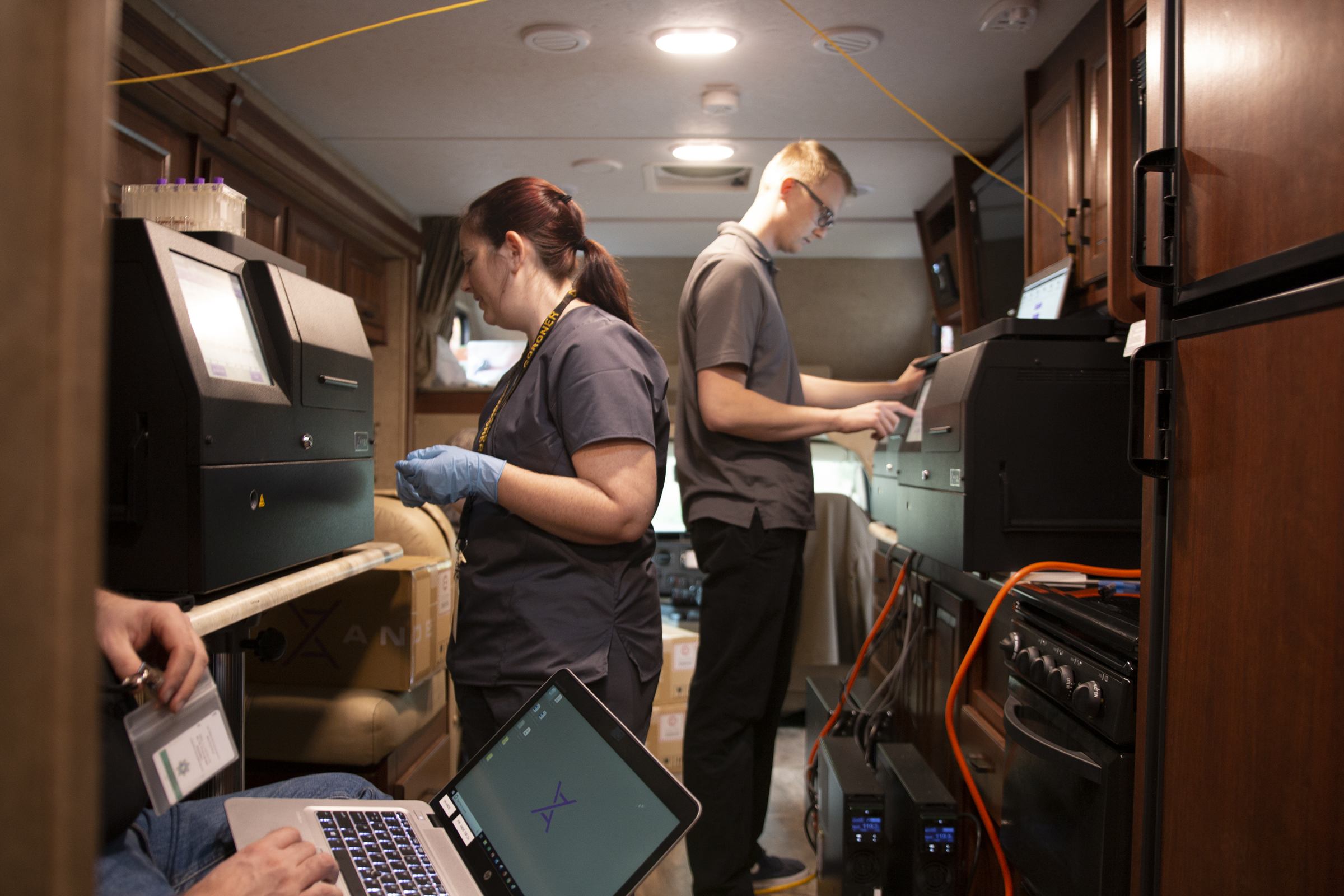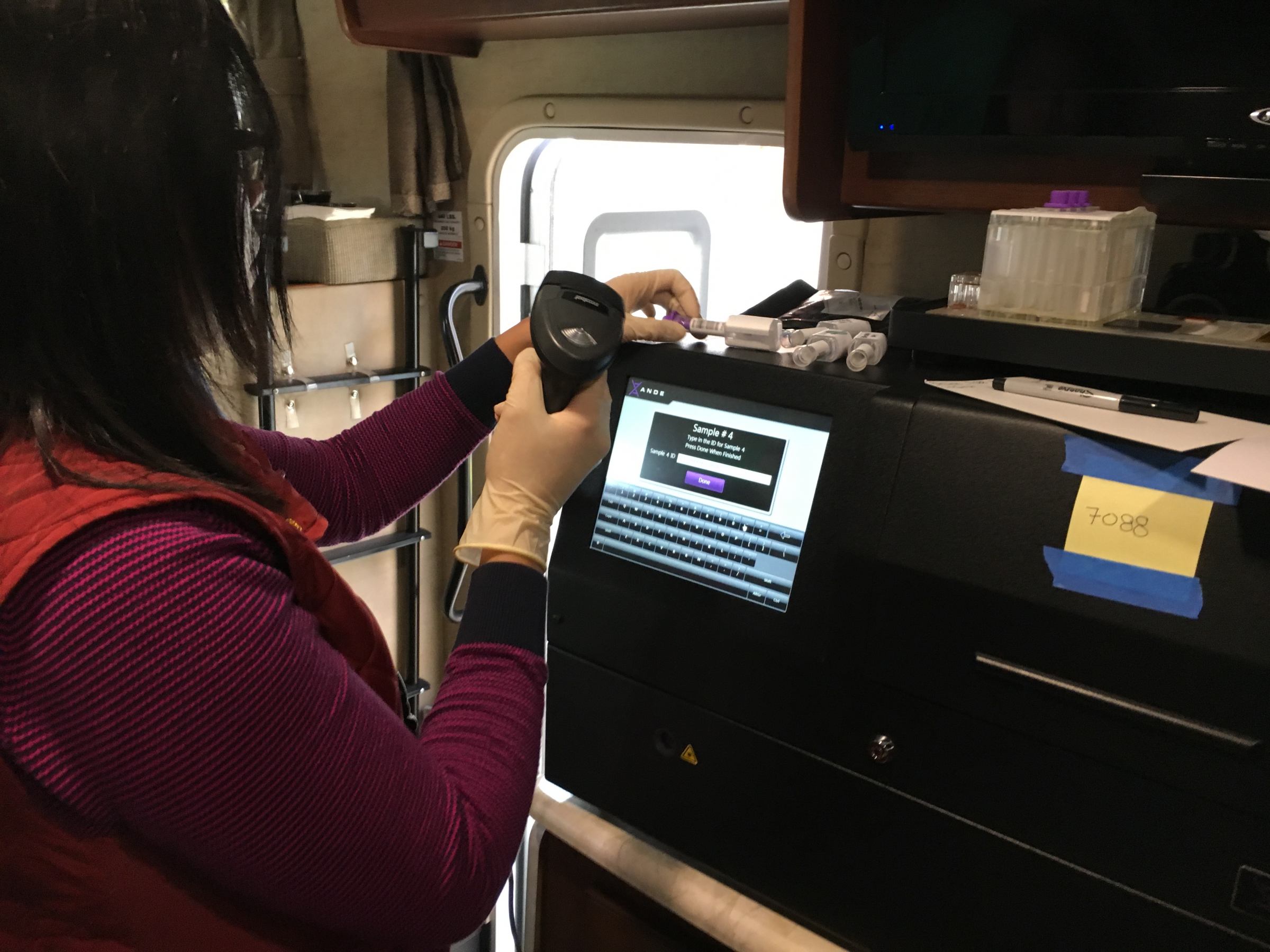
The hours and days following a mass casualty event can be fraught with uncertainty and pain as families and loved ones wait for news on missing family members. Amid the chaos and devastation, medical examiners often provide closure as they identify victims in the aftermath, but their ability to do this quickly can vary depending on the size, scope, and type of disaster.
Such challenges were the case following the Camp Fire wildfire that killed 85 people and devastated communities in Paradise, California, in the fall of 2018. DNA analysis became the first resort as it provided identifying information in under two hours when dental records and fingerprints weren’t available.
With the help of Rapid DNA technology, medical examiners were able to provide quicker closure for many families as compared to the weeks or months it can take to produce results in a traditional forensic lab. Funded in part by the Department of Homeland Security (DHS) Science and Technology Directorate (S&T), Rapid DNA technology, positively identified 85 percent of the victims in the aftermath of the disaster. Two victims remain unaccounted for as of February 7, 2019.
Lending a hand in a time of anguish and crisis

The Sherriff’s Office of Butte County, California, invited the ANDE Corporation, S&T’s commercial partner for the Rapid DNA technology, to help at the disaster site to analyze DNA samples. ANDE is one of the two companies that developed technology for quick DNA analysis at DHS S&T’s request. ANDE brought its machines to the disaster site to analyze and match samples from victims and relatives.
The Rapid DNA technology, which can simultaneously analyze five DNA samples in 90 minutes, helped identify victims in two stages.
First, it tested multiple samples of human remains to see which DNA samples were viable for identification. Chris Miles, DHS S&T Project Manager for Rapid DNA, and Dr. Amanda Sozer, a consultant for S&T, observed that ANDE and the Sacramento County Coroner’s Office were very well-coordinated for that effort. ANDE brought a recreational vehicle equipped with three Rapid DNA instruments, directly to the coroner’s office.
The ANDE team worked with the coroner’s medical staff to select remains for DNA extraction, analyzed the samples, and returned the results to the coroner.
Viable DNA samples were then matched to next of kin, a requirement for identification. For that purpose, the Sheriff’s Office invited family members of missing persons to a local family assistance center where four additional Rapid DNA instruments were set up. Three hundred family members, all looking for answers about their loved ones, volunteered their DNA to be processed for potential matches.
“Despite the extreme damage to the remains, the Rapid DNA machines were able to quickly make accurate matches and confirm victims’ identities,” said Miles. “Rapid DNA became a priority tool for the Sacramento County Coroner’s Office during this event,” Miles said. “I was glad to see we could help bring closure to many families.”
Why Rapid DNA?
Rapid DNA was developed in part because DHS needed a technology that can quickly analyze DNA to verify family relationships (kinship), and identify victims of mass casualty events and human trafficking. To help DHS, S&T funded the development of aspects of the technology through its Small Business Innovation Research program (SBIR), which challenges industry to bring innovative homeland security solutions to reality.
ANDE came up with a portable machine that met the requirements set by SBIR and potential DHS end users.

“DHS S&T has been instrumental in supporting ANDE’s development of the Rapid DNA technology,” commented Dr. Richard Selden, ANDE’s Founder and Chief Scientific Officer. “In addition to funding several projects, Chris Miles of S&T worked to include ANDE in a number of mock disaster victim identification exercises—experiences that were invaluable when we initiated our efforts at the Camp Fire disaster.”
The most important part of the Rapid DNA machines is the BioChip – a specially designed single-use container that can hold five test tubes with a DNA sample in each. The BioChip, which is inserted into the machine, is engineered to perform all DNA testing needed for analysis. When the results are ready, the BioChip is discarded and destroyed.
“In a traditional laboratory, you would move the sample from one machine, to another machine, to another machine, but Rapid DNA is all one machine,” said Sozer, whose company SNA International specializes in mass fatality response preparation. “There is a whole lab in that BioChip.”
Experienced in victim identification, Sozer noted the value of this tool for mass casualty response. “This new technology is much more rapid than traditional DNA labs. Rapid DNA takes an entire lab and puts it into a box the size of a desktop printer that can be used right at the location where it is needed,” she said.
In addition to disaster response, Rapid DNA’s success is attributed to the traction it has gained with the government. The Rapid DNA Act of 2017 was passed to support criminal investigations by the Federal Bureau of Investigation. Additionally, AABB, the former American Association of Blood Banks, provided Standards for Relationship Testing Laboratories in January 2018 required to accredit Rapid DNA for family relationship testing. A recent study tested the Rapid DNA technology head-to-head against conventional laboratory DNA processing. The validation study showed that conventional laboratory DNA processing had a first pass success rate of 77.2 percent while Rapid DNA had a 92 percent first pass success rate and an accuracy of 99.998 percent on the same samples.
S&T and the developers of the tool have also taken great strides to do their due diligence to address any privacy concerns with Rapid DNA. ANDE analyzes only non-coding sections of DNA to protect the privacy of those tested, as gene-coding sites of DNA can reveal individual characteristics like hair and eye color, medical conditions and more. Each DNA sample is tracked only by barcode and kept separate from the name, relationship claims and other privately identifiable information that’s only available to the coroner and sheriff’s office.
“I was glad to see that ANDE is still using the safeguards S&T built in,” Miles said.
In May 2019, a report on lessons learned from using Rapid DNA in response to fire-related events will be presented at the American Society of Crime Lab Directors conference.
Future plans
Now that Rapid DNA has proven its worth, the federal government is working to transition it to U.S. Customs and Border Protection and the U.S. Secret Service. S&T also worked with the U.S. Citizenship and Immigration Services to publish new policy [PDF, 136 KB, 12 pp.] about DNA analysis to prove sibling relationships in 2018 and Rapid DNA is proving to be a high speed and accurate way to do so.

